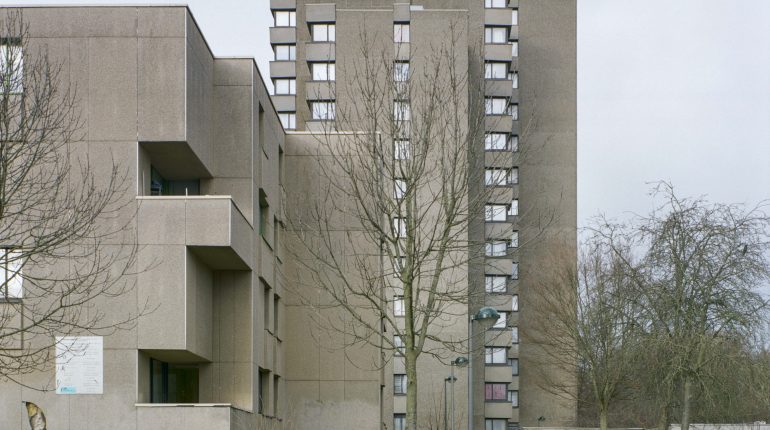During the study phase of the Sustainable Neighborhood Contract, it was observed that the Versailles district, located in the north of Brussels, suffers from isolation. Originally designed by the architect Robert Courtois as a modernist residential complex in an open park environment, the district is both socially and spatially disconnected from the surrounding neighborhoods. The uniformity of typology, monofunctionality, and social exclusion reinforce this withdrawal. The challenge to unlock the Versailles district is threefold: simplifying the mobility of residents, attracting audiences from neighboring areas, and restoring the district’s image at a supra-local level.
One of the main problems identified in Versailles is the difficult access to employment. During a participatory event on this issue, the conclusion was that establishing a local facility focusing on employment, training, and connecting job seekers with employers would be essential to breathe new life into the neighborhood and make it more accessible. To address the lack of diverse amenities in the district, it was strongly recommended to provide additional functions on-site, such as sports facilities, shared meeting spaces for local associations, new premises for the House of the Child, spaces for the prevention service, and facilities for the BRAVVO non-profit organization… This led to the idea of a large facility focusing on employment and offering a range of other useful functions.
The intended location plays a crucial role for the district. The intended location plays a crucial role for the district. It connects the Avenue de Versailles with the rue de Beyseghem, making it a central point and one of the gateways to Versailles from the surrounding neighborhoods. Additionally, there is potential in the proximity to the school complex in the southern part of the site. The neighborhood contract proposes to transform this place into a lively hub for exchanges and various amenities for the community, to achieve a better connection between north and south and to provide a qualitative public space (social, landscape, ecological, etc.). The project aims to become a catalyst for the urban renewal of the district.
This project is supported by the European Fund for Regional development.
